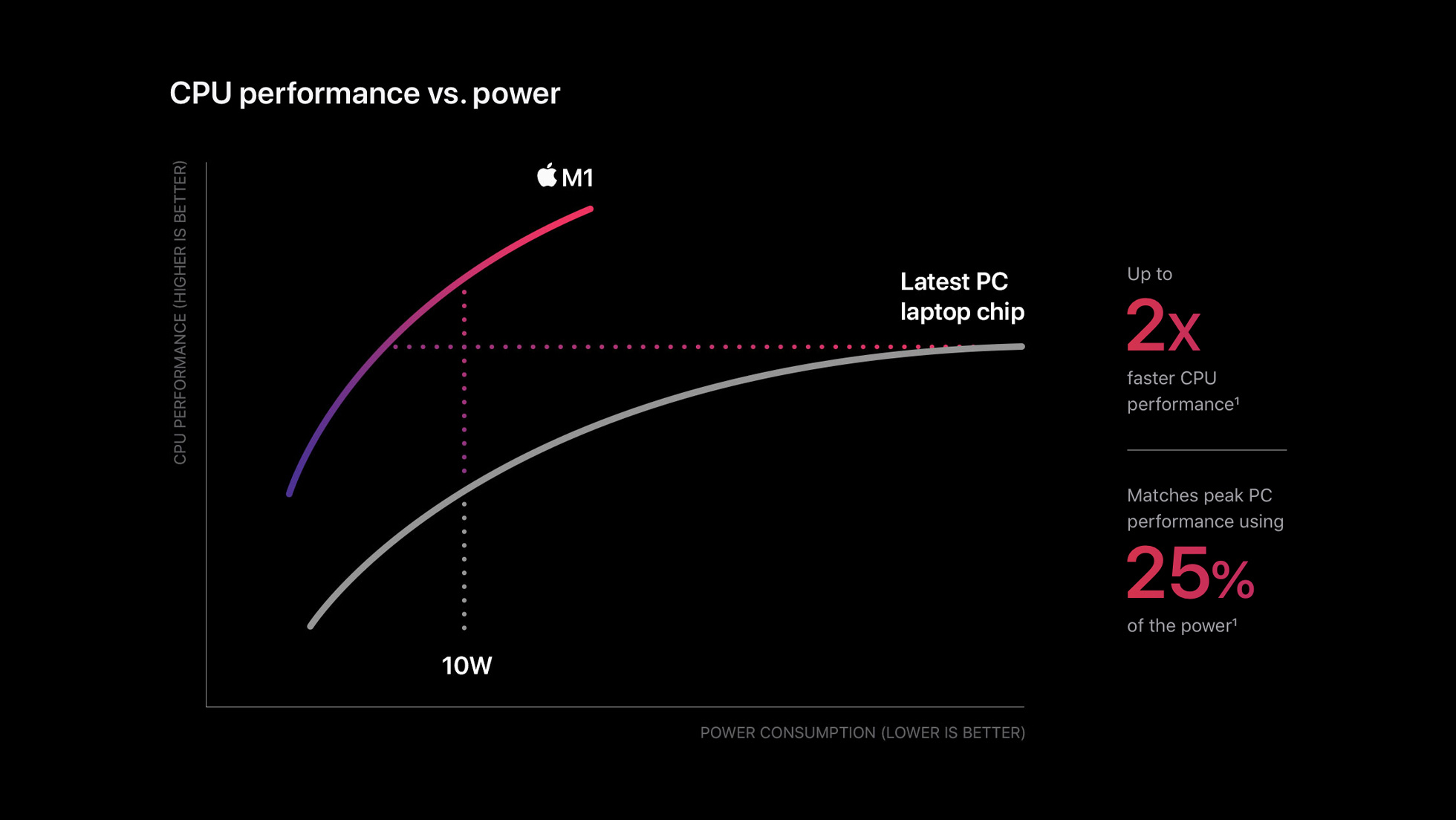So today we saw the announcement of the M2. It’s obviously faster than the M1 (duh), but Apple never stated clearly what its wattage is. Is it possible the M2 runs at a lower wattage and we get better battery life at the same battery capacity? Apple’s marketing images make a direct comparison difficult.
Yeah…not real clear what’s going on there yet…and frankly it’s obvious that the next generation would be faster…but whether it’s actually faster in any meaningful way beyond benchmarks and spec bragging is unknown at this point. It definitely doesn’t make my 14 M1 Pro MBP or M1 Max Studio obsolete. Frankly…they may just be polishing cannonballs here and not really achieving anything meaningful…because the vast majority of us have never fully taxed even the base M1 in the Macs it is in. I sure haven’t…and even either the MBP or the Studio running complex Lightroom Stuff when one looks at the CPU loads in Activity Monitor or iStat Menus they’re pretty much loafing…so either macOS or Lightroom is the bottleneck it looks like. I can see that some really high end stuff might max out either of those chips and hence the M2 Pro, Max, or Ultra whenever they appear might be faster…but for most people there will be little to no actual improvement in day to day operations is my guess. Mostly M2 is likely based…as numerous sites have suggested…on the A something_or_other +1 as compared to the M1 being based on the A something_or_other. Nice to see improvement but pretty much irrelevant to most of us except those that are willing to spend more for the best and latest…which isn’t me.
The other thing is that don’t appear to be any major architectural changes that would allow M2-only features to be implemented in the future.
I am curious whether the new ‘Stage Manager’ and other new features promoted in the WWDC presentation will be Apple Silicon only or whether they will also work on Intel computers.
They did not dwell too much on direct comparisons to M1. But they did claim M2 offers +18% in terms of CPU performance (twice that for the GPU which now comes with 2 added cores) with a 25% higher transistor count overall.
The new 24 GB RAM ceiling is of course nice, but even better IMHO is the 50% increase on unified memory b/w, now at 100GB/s.
I get that we’ll be getting more performance at the same wattage, but I’d be really curious to hear if we’ll be seeing lower wattage at similar performance levels (i.e. when P cores idling, only 4 E cores running at low/high freq), etc.
That said, the new dark blue MBA is gorgeous. If only they didn’t put both its TB4 ports on the same side.
They state that the processor is using "TSMC’s 'Enhanced 5-nanometer technology’”. The M1 was already using TSMC’s 5 nm process, so what the M2 utilizes is just a refined version of that process. Based on similar refinements in past generations of A-series chips (A14 to A15, and A12 to A13), I’d expect fairly minor power savings with the M2. The improvements in performance are all architectural rather than process-driven.
Indeed, it’s interesting to see Apple chose to use the M2 name for a new chip that’s still based on a 5-nm process. Looks like several prominent “sources” were wrong (again?). DigiTimes and Gurman (with Bloomberg these days) claimed we’d see M2 based on TSMC’s 4-nm process, while Kuo was correct that Apple would be sticking with 5 nm for now, but he predicted they’d likely stick with the M1 name. Not that any of these claims are terribly important, but it just goes to show how tight Apple keeps this dev. These so-called “sources” are massively overselling whatever they have, if anything at all.
And they got the name of the new MacOS wrong, not only wrong but from an entirely different region of California!! The rumor mill has been promoting Mammoth in the eastern Sierra Nevada Mountains, while the actual is Ventura, along the coast, west of Los Angeles.
Just like all, well almost all…media and sound bites/social media of any sort these days…it’s all in the clicks because that means $$.


/https://photos.reportinglive.com/p/2022-06-06/f1654538456.jpg)
/https://photos.reportinglive.com/p/2022-06-06/f1654538223.jpg)
/https://photos.reportinglive.com/p/2022-06-06/f1654538536.jpg)